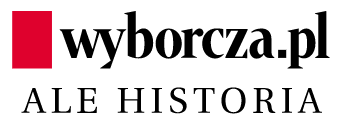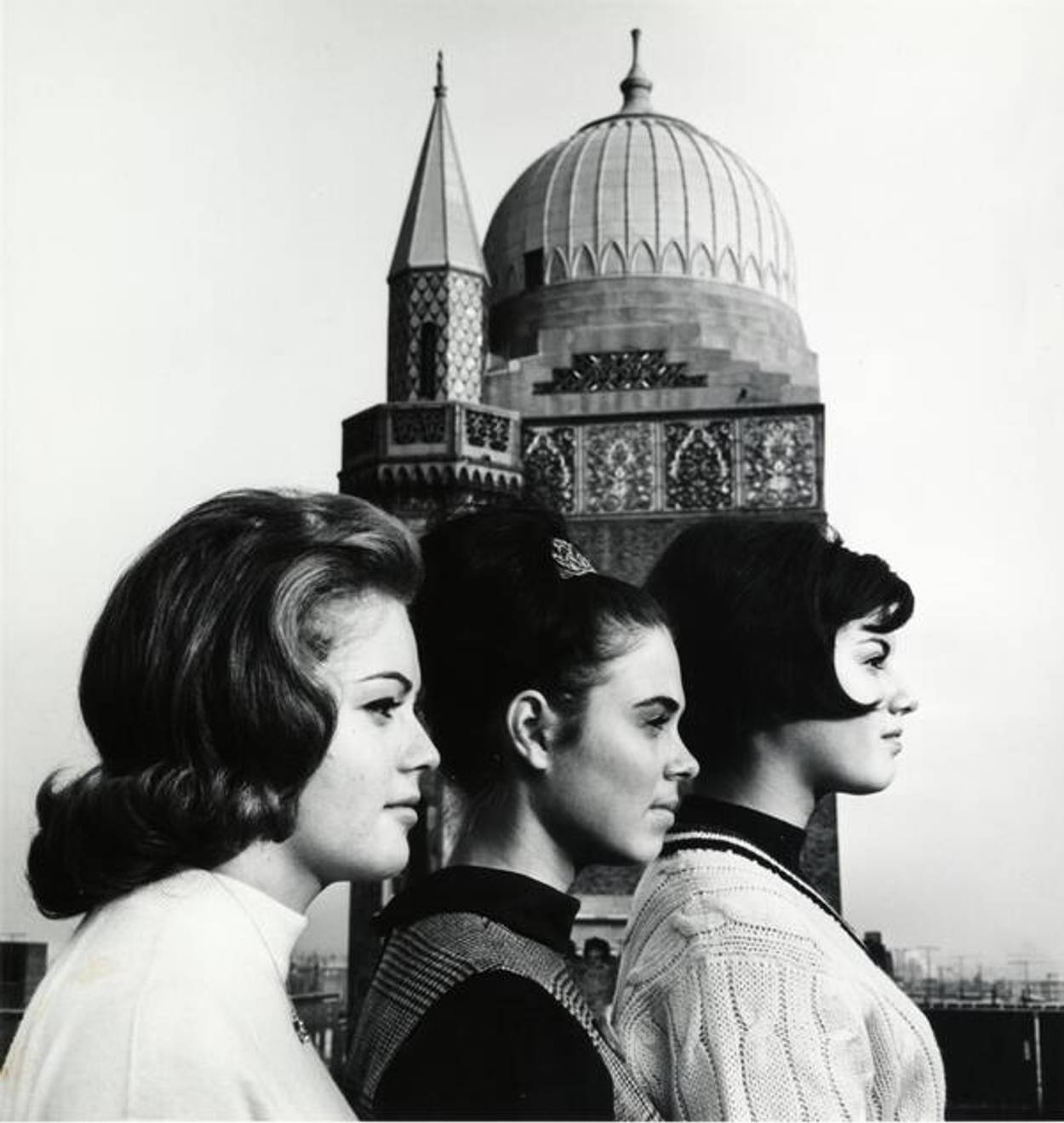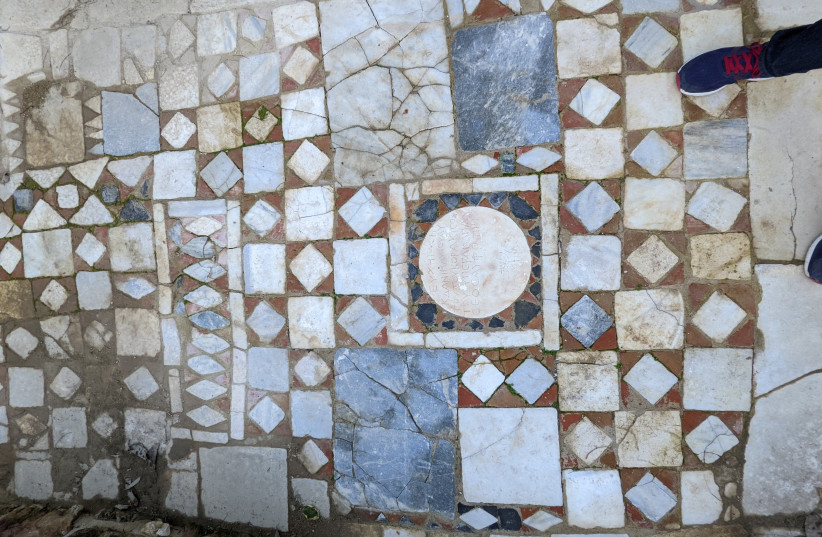 Czy Czesi kolaborowali z Niemcami?
Czy Czesi kolaborowali z Niemcami?
Andrzej Krawczyk
 Tłum na ulicach Brna, Czechosłowacja, podczas wkroczenia Wehrmachtu w marcu 1939 r. (Fot. Wikimedia Commons)
Tłum na ulicach Brna, Czechosłowacja, podczas wkroczenia Wehrmachtu w marcu 1939 r. (Fot. Wikimedia Commons)
– Nie mieliśmy kolaboracji państwowej, ale przypadków tej indywidualnej było wiele. Postawy funkcjonariuszy policji granatowej nie różniły się zasadniczo od zachowania czeskich żandarmów – mówi prof. Piotr M. Majewski, autor książki “Niech sobie nie myślą, że jesteśmy kolaborantami. Protektorat Czech i Moraw, 1939-1945”.
Rozmowa z Piotrem M. Majewskim
Andrzej Krawczyk: Zacznijmy od wyjaśnienia, co to był Protektorat Czech i Moraw i jak należy rozumieć tytułowy termin “kolaboracja”?
Piotr M. Majewski: Nie ma jednego ściśle skatalogowanego zestawu czynów, które uznajemy za kolaborację. Zmienia się on w zależności od czasu, miejsca i okoliczności nawet w obrębie jednego kraju. Standardowy przykład to podpisanie volkslisty na ziemiach polskich. W okupowanej Warszawie dość jednoznacznie uchodziło ono za kolaborację, a na Górnym Śląsku zachęcały do tego nawet podziemie i Kościół, bo niemiecki nacisk na przyjmowanie listy był tam ogromny i tylko w ten sposób można było uchronić się przed represjami. Płynie z tego wniosek, że kolaboracja to taki rodzaj współpracy z wrogiem, którego w danym momencie nie akceptuje określona społeczność.
Czym wobec tego był Protektorat Czech i Moraw?
– Możemy nazwać go rodzajem europejskiej kolonii III Rzeszy. Był to niesuwerenny organizm państwowy, właściwie we wszystkim całkowicie zależny od Niemców i ściśle przez nich kontrolowany, począwszy od Hitlera jako najwyższej instancji politycznej, a skończywszy na urzędnikach i policjantach nadzorujących czeskie władze i społeczeństwo.
W przeciwieństwie do Generalnego Gubernatorstwa Protektorat był jednak tworem do pewnego stopnia autonomicznym. Mimo systematycznego ograniczania przez Niemców kompetencji czeskich instytucji przetrwały one aż do samego końca wojny, zachowując pewien zakres swobody. Istniały czeskie struktury państwowe z własną policją i żandarmerią, rządem, prezydentem, nawet ze szczątkowymi siłami zbrojnymi, które nazywano wojskiem rządowym. Większość urzędów i instytucji kontynuowała swoją działalność sprzed 15 marca 1939 roku. W administracji pracowali w większości Czesi, z którymi zwykły obywatel mógł się komunikować w języku ojczystym. Na terenach, gdzie nie mieszkało zbyt wielu Niemców, zwykły Czech mógł przez całą wojnę nie zetknąć się z nimi w sprawach urzędowych.
Ten zwykły Czech miał dwóch prezydentów: Edvarda Beneša w Londynie i Emila Háchę w kraju. Jakie to miało konsekwencje psychiczne?
– Prezydenta Beneša miał dopiero od lipca 1940 roku, kiedy tymczasowe władze czechosłowackie na emigracji zostały oficjalnie uznane przez Wielką Brytanię. Wcześniej dla Háchy nie było właściwie alternatywy. Od kiedy jednak alianci dali zielone światło Benešowi, sympatie Czechów coraz wyraźniej przechylały się na jego stronę, a rząd i prezydent Protektoratu coraz bardziej uchodzili za kolaborantów. W praktyce jednak ogromna większość społeczeństwa zapalała Panu Bogu świeczkę i diabłu ogarek. Na co dzień wszyscy musieli zachowywać posłuszeństwo wobec czeskich władz Protektoratu i stojących za nimi Niemców. Uczestniczyli w hitlerowskich manifestacjach, gdzie podnosili ramiona w nazistowskim pozdrowieniu, wytrwale pracowali w fabrykach zbrojeniowych. Zbuntowanie się groziło represjami. Ale po cichu Czesi liczyli na klęskę Rzeszy i odbudowanie niepodległej republiki. Może nie wszyscy, ale na pewno zasadnicza część społeczeństwa. Przypominało to do pewnego stopnia postawy Polaków w latach stalinizmu: zwolenników nowego reżimu było stosunkowo niewielu, przeciwników skłonnych walczyć przeciwko niemu z bronią w ręku jeszcze mniej, a większość ludzi starała się ułożyć sobie jakoś życie. Chodzili na manifestacje pierwszomajowe, a potem w domach przeklinali komunistów. Zarówno w czeskim, jak i w polskim przypadku było to z pewnością schizofreniczne, ale pozwalało jakoś przetrwać.
Od 1941 roku Niemcy prowadzili aktywną politykę społeczną i wykonywali pseudoopiekuńcze gesty wobec robotników. Organizowali kolonie letnie dla dzieci, wczasy pracownicze czy szklankę mleka na dużej przerwie w szkołach. Historycy oceniają politykę Reinharda Heydricha, zastępcy protektora Czech i Moraw, jako wyraz cynizmu. Czy myślisz, że miała szansę na sukces?
– Docelowo, oczywiście nie. III Rzesza przegrałaby wojnę niezależnie od tego, czy udałoby się jej obłaskawić Czechów, którzy zresztą w ogromnej większości zdecydowanie sympatyzowali z aliantami. Nie mogła tego zmienić żadna socjotechnika. Nawet pod rządami Heydricha polityka taka miała swoje wyraźne ograniczenia: większość Czechów nienawidziła Niemców, bo stosowali oni politykę „kija i marchewki”, a razy kijem były upokarzające.
Kiedy rozstrzeliwuje się ludzi, trudno zdobyć sympatię okupowanych, nawet jeśli jednocześnie podnosi się niektórym z nich pensje, daje wyższe przydziały kartkowe i wysyła na wczasy do renomowanych kurortów. Ale krótkofalowo niemiecka polityka przynosiła pewne skutki.
Dezintegrowała Czechów i wywoływała zamęt. Było to szczególnie widoczne wśród warstw niższych, które wprawdzie bały się Heydricha, ale uważały jego decyzje za krok we właściwym kierunku, za zaprowadzenie sprawiedliwości społecznej. Zawsze znajdą się tacy, którzy przyklasną uderzeniu w elity, a Heydrich wziął na celownik przede wszystkim wielkomiejską inteligencję.
Na początku tego wieku wydano wspomnienia czeskiego żandarma, który pisał, że ponieważ znany był ze swojego pozytywnego stosunku do przedwojennej Czechosłowacji, przełożeni skierowali go za karę do pilnowania Żydów w Terezinie. Z polskiej perspektywy uznalibyśmy go chyba za kolaboranta. Tymczasem on tak siebie w ogóle nie postrzegał, a nawet uważał się za prześladowanego, o czym świadczy fakt, że napisał o tym w swoich opublikowanych wspomnieniach. Gdzie w opisywanej przez ciebie czeskiej rzeczywistości przebiegała granica pomiędzy nieuniknioną współpracą z Niemcami a kolaboracją?
– Oczywiście nie wiemy, jak ten żandarm się naprawdę zachowywał. To trzeba by dopiero zbadać. Tego typu deklaracje składane ex post należy zawsze traktować z dużą ostrożnością. Faktem jest jednak, że podobnie uważało bardzo wielu czeskich polityków, urzędników i funkcjonariuszy.
Załóżmy, że zachowywał się dobrze. Czy uznalibyśmy go za kolaboranta?
– Wracamy do intersubiektywnego charakteru kolaboracji. Większość żandarmów czeskich, niezależnie od tego, czy utożsamiali się z demokratyczną Czechosłowacją, nie uważała się za kolaborantów. Czuli się funkcjonariuszami własnego, czeskiego państwa. Wraz z tym państwem zostali podporządkowani potężnemu sąsiadowi. Niektórzy z nich, co zostało dowiedzione, współpracowali z ruchem oporu, kilkuset z nich było przez Niemców aresztowanych, niektórzy zostali rozstrzelani. Inni natomiast wiernie pracowali dla okupantów, byli przez nich nagradzani i odznaczani. Oceniamy ich dzisiaj jako kolaborantów i tak też byli oceniani przez swoich współczesnych. Dla zwykłych Czechów główne kryterium stanowiło zazwyczaj to, czy konkretny funkcjonariusz szkodził ludziom, swoim rodakom.
Trzeba jednak zwrócić uwagę, że nie dotyczyło to stosunku do Żydów. Oni już w marcu 1939 roku zostali uznani przez władze Protektoratu za element obcy, chociaż wcześniej byli obywatelami Czechosłowacji. Społeczeństwo czeskie milcząco to zaakceptowało. Można wręcz powiedzieć, że zostali świadomie rzuceni Niemcom na pożarcie. Pojawia się zatem pytanie, czy czeska polityka wobec Żydów nie była od samego początku kolaboracją? Dzisiaj nie mamy raczej co do tego wątpliwości.
Generał Eliáš, premier Protektoratu do 1941 roku, bez wątpienia czeski patriota i aktywny współpracownik ruchu oporu, bez protestów wydał Żydów na łup okupantom.
Podobnie stało się z Romami, których czeskie władze więziły w nieludzkich warunkach w specjalnie zorganizowanych obozach koncentracyjnych. W ówczesnej czeskiej optyce postawy wobec Żydów i Romów nie uważano jednak za kolaborację z Niemcami.
To wymiar okupacyjnej rzeczywistości, którego w Polsce w zasadzie nie znaliśmy, bo niemiecki okupant, wprowadzając twardy reżim okupacyjny, nie dał szansy na kolaborację systemową i uwolnił nas od takich dylematów.
– Nie mieliśmy kolaboracji państwowej, ale przypadków tej indywidualnej było wiele. Postawy funkcjonariuszy policji granatowej nie różniły się przecież zasadniczo od zachowania czeskich żandarmów, również gdy chodziło o stosunek do Żydów.
Kogo na pewno uznałby pan za kolaboranta w Protektoracie?
– Kolaborantami z przekonania byli w większości czescy faszyści. Od samego początku okupacji nadskakiwali Niemcom, oferowali im swoje usługi, wysługiwali się im jako konfidenci. Chcieli przekonać Rzeszę, aby przekazała im władzę w Protektoracie, a oni wtedy przemienią Czechów we wzorowych nazistów. Niemcy nie skorzystali z ich oferty, bo z różnych względów uważali ich za niepoważnych i niewiarygodnych. Zupełnie zresztą słusznie: wódz najbardziej radykalnego skrzydła czeskich faszystów Jan Rys-Rozsévac studiował wiele lat medycynę, ale nie zdołał zdać ani jednego egzaminu. Jak tylko przestał im być potrzebny, Niemcy zamknęli go w obozie koncentracyjnym.
Drugi rodzaj kolaborantów to różnej maści koniunkturaliści. Należał do nich np. przedostatni premier Protektoratu i jednocześnie minister sprawiedliwości Jaroslav Krejcí, człowiek o demokratycznych korzeniach, ale chorobliwie ambitny i łasy na pieniądze, zaszczyty oraz komplementy. Od stycznia 1942 roku był niezwykle gorliwym wykonawcą wszelkich niemieckich poleceń. Jeszcze inny przypadek to pułkownik Emanuel Moravec, najbardziej radykalny czeski kolaborant. Z jednej strony można go uznać za koniunkturalistę, ponieważ w 1938 roku chciał za wszelką cenę walczyć w obronie republiki. Z drugiej, był on takim fanatykiem, że zdystansował na tym polu czeskich faszystów i innych zwolenników lojalnej współpracy z nazistowską Rzeszą. Nie wahał się wychwalać represji.
Próbował przekonać władze Protektoratu, aby zaoferowały Hitlerowi wysłanie czeskich żołnierzy na front wschodni.
Pozostali czescy politycy bali się go. Kolaborantem stał się wreszcie prezydent Hácha, nawet jeśli początkowo próbował przeciwstawiać się tym czy innym oczekiwaniom Rzeszy. Po niemieckich zwycięstwach na Zachodzie w 1940 roku stracił jakąkolwiek wolę oporu i spełniał bez protestów wszystkie żądania okupanta. W swoich wystąpieniach do narodu domagał się pełnej lojalności wobec Niemiec.
No właśnie. To kolaborant czy po prostu zwykły zdrajca? Czy w ogóle ma sens takie rozróżnienie i czy można je wprowadzać?
– Zacznijmy znowu od definicji. Przypomnijmy, że w czasie wojny ani w Polsce, ani w Czechach nie posługiwano się pojęciami “kolaborant” czy „kolaboracja”. Mówiono raczej, że ktoś jest Quislingiem albo zdrajcą. Z dzisiejszej perspektywy „kolaborant” i „zdrajca” nie są natomiast pojęciami całkowicie równoznacznymi. Zdrada to przestępstwo zdefiniowane w kodeksach karnych. Zdrajcą jest np. oficer, który przekazuje tajne informacje obcemu wywiadowi. Nie nazwiemy go jednak kolaborantem. Mówimy tak natomiast o kimś, kto współpracuje z nieprzyjacielem w warunkach obcej okupacji albo dominacji. Osoba taka niekoniecznie musi dopuszczać się jakiegokolwiek przestępstwa. Przykładowo: w okupowanej Europie za kolaborantki uważano powszechnie kobiety, które romansowały z Niemcami, choć przecież nie zabraniało tego żadne prawo. Kolaboracja obejmuje zatem trochę inny zakres czynów niż zdrada, ale oba zbiory mają swoją część wspólną.
Termin „kolaboracja” w jego obecnym znaczeniu narodził się dopiero w 1940 roku po francuskiej klęsce w wojnie z Niemcami. Posłużył się nim marszałek Petain, zapowiadając swoim rodakom podjęcie współpracy z Hitlerem. Po wojnie słowo to zrobiło zawrotną karierę i jest do dzisiaj obecne w dyskursach politycznych na całym świecie.
W Czechach często jako symbol kolaboracji i zdrady wymienia się Karela Curdę, czyli cichociemnego zrzuconego na spadochronie z Anglii, który dobrowolnie zgłosił się do Niemców i wydał uczestników zamachu na Heydricha. Kierowała nim podobno chęć uchronienia Czechów przed masowymi represjami. Zginęło przez niego wielu ludzi. Jak mamy opisać tę historię: zdrada i podłość czy bardziej ludzka tragedia?
– Nie chciałbym zabrzmieć jak kieszonkowy Robespierre, ale nie mam sympatii dla Curdy i nie sądzę, aby był idealistą. Widzę w nim raczej człowieka chwiejnego psychicznie, w którego przypadku popełniono fundamentalny błąd, rekrutując go do tajnej operacji. Ewidentnie do niej się nie nadawał. Podstawową zasadą, która obowiązywała cichociemnych po wylądowaniu w okupowanym kraju, był bezwzględny zakaz kontaktowania się z rodziną. Miał on zabezpieczyć ich przed przypadkową dekonspiracją, ale też przed presją psychiczną ze strony otoczenia. Wiadomo było przecież, że Niemcy stosują zasadę odpowiedzialności zbiorowej i człowiek, który będzie się ukrywał u rodziny, stanie przed dylematem, czy ma prawo narażać ją na śmierć. Curda najpierw odnowił kontakty z narzeczoną, a później, już po zamachu na Heydricha, ukrywał się u matki. Zdradził swoich towarzyszy broni; udał się na Gestapo i zawiadomił, kto dokonał zamachu i gdzie mogą przebywać zamachowcy. Został później niemieckim agentem-prowokatorem i polował na członków czeskiego ruchu oporu.
* Piotr M. Majewski – historyk dziejów najnowszych, pracuje w Instytucie Historycznym Uniwersytetu Warszawskiego. W latach 2009-2017 był zastępcą dyrektora Muzeum II Wojny Światowej w Gdańsku, gdzie odpowiadał za przygotowanie wystawy głównej. Specjalizuje się w historii Czechosłowacji i stosunkach czesko-niemieckich w XX w. Laureat Nagrody Klio, finalista Literackiej Nagrody Nike
Niech sobie nie myślą, że jesteśmy kolaborantami. Protektorat Czech i Moraw 1939-1945
Piotr M. Majewski
Wydawnictwo Krytyki Politycznej
Zawartość publikowanych artykułów i materiałów nie reprezentuje poglądów ani opinii Reunion’68,
ani też webmastera Blogu Reunion’68, chyba ze jest to wyraźnie zaznaczone.
Twoje uwagi, linki, własne artykuły lub wiadomości prześlij na adres:
webmaster@reunion68.com








